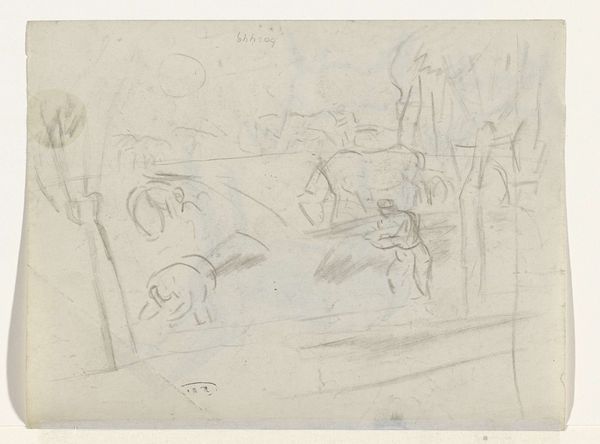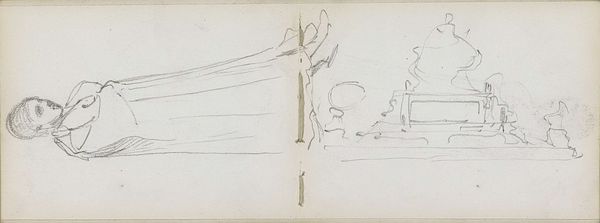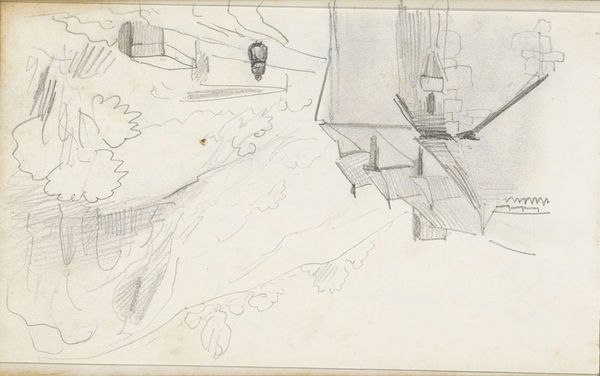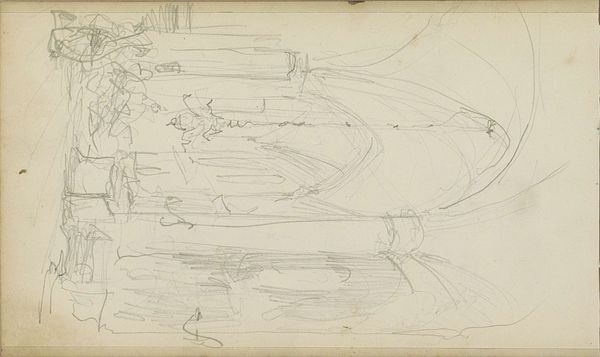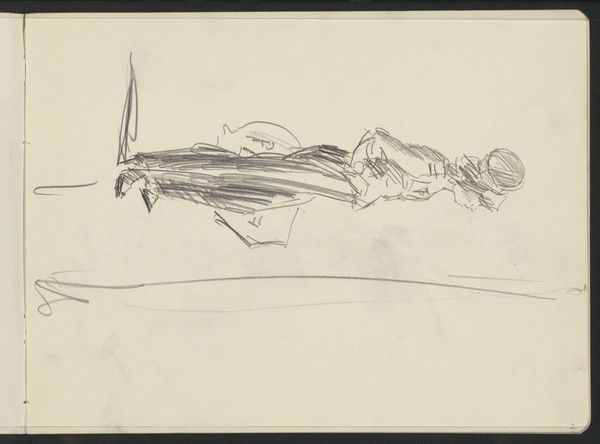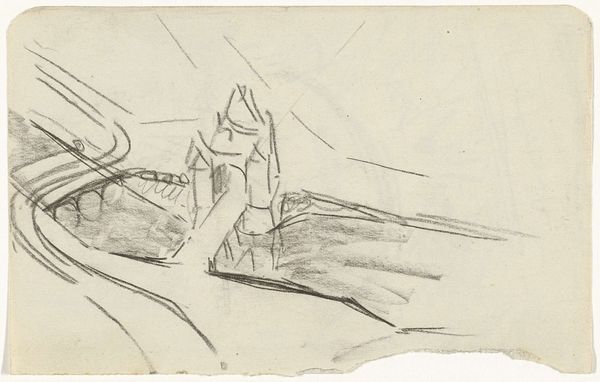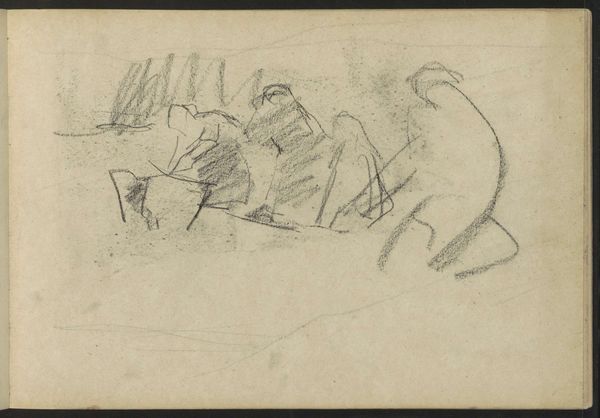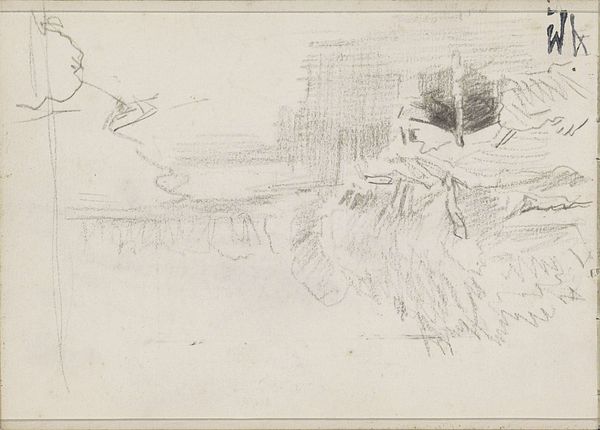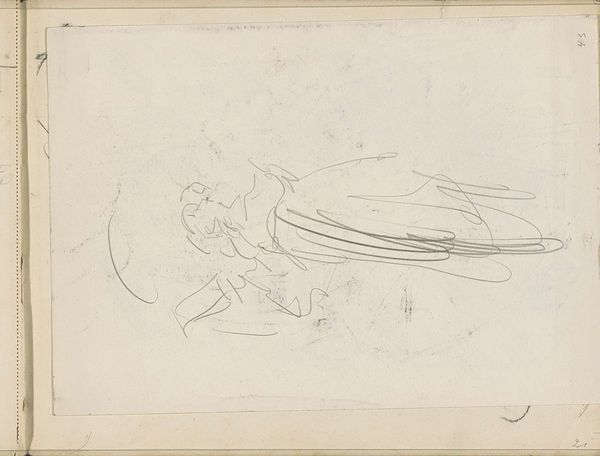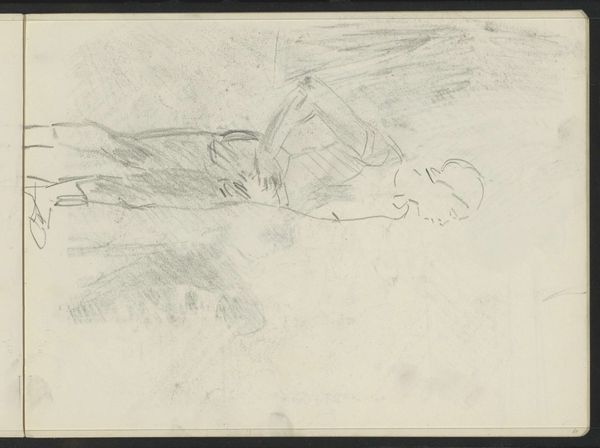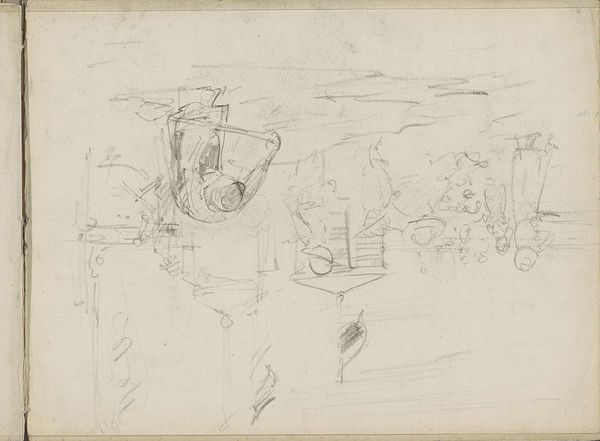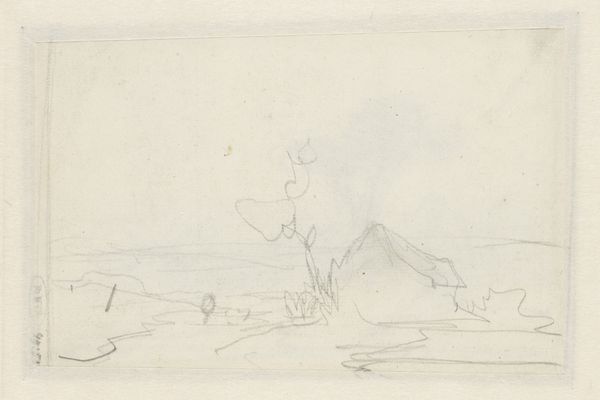
drawing, pencil
#
drawing
#
landscape
#
pencil
#
realism
Copyright: Rijks Museum: Open Domain
Editor: This is a pencil drawing from 1840-1841 by Johannes Tavenraat, titled *Boats and an Ox-Cart on the Bank of a River*. It has a very immediate, sketched feeling – what stands out to you about it? Curator: The roughness itself speaks volumes. It isn't a finished, polished presentation. It feels like a captured moment, a quick impression jotted down. What kind of memory is Tavenraat trying to hold onto? Are those fleeting cloud shapes up above a hint to its message? Editor: That’s a great point about the fleetingness of it. The ox-cart feels like it grounds the composition, but the wispy lines suggest a more profound understanding of nature's power. What do you make of that contrast? Curator: Indeed. Oxen were fundamental symbols of stability, agriculture and toil, but even more they suggest time. Yet, boats offer movement, potential journeys. Notice how his line is firm at places, then disappears to the clouds as if offering passage between these places. One could interpret the sketch as the balance between the known and the imagined. Editor: So, it is both literally a landscape and symbolically representing opposing forces in life itself? Curator: Possibly. The river acts as the boundary and facilitator. A connector. So, ask yourself, what lies on either bank of your own symbolic rivers? Editor: It is really incredible how much can be communicated with such a simple medium, in such an immediate way. I guess this drawing style allows us to have direct access into the inner vision of the artist, perhaps, as you suggested, preserving a fragile memory. Curator: Exactly. It captures not just a scene, but the feeling of being in that scene at that time, bridging past and present, reality and reverie.
Comments
No comments
Be the first to comment and join the conversation on the ultimate creative platform.


